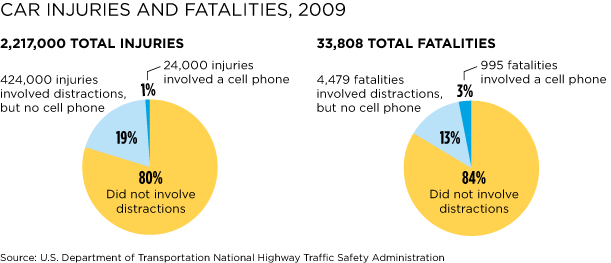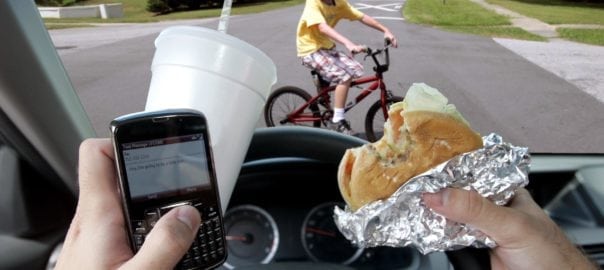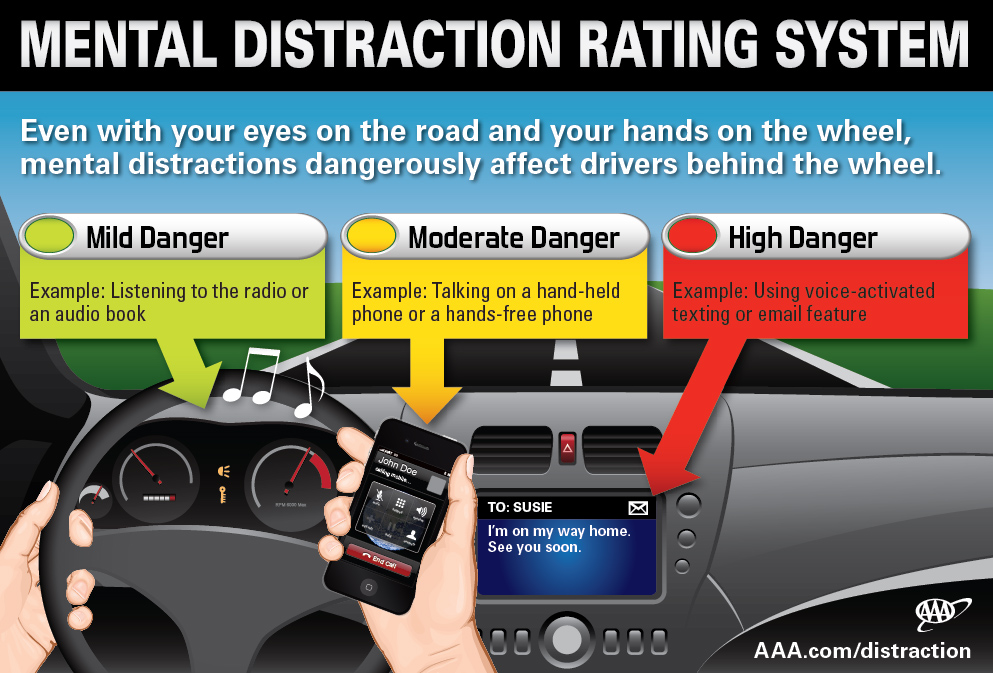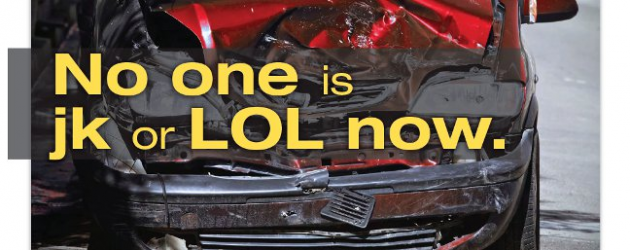I find lawmakers fascinating. For example, when states fail to pass distracted driving laws in the name of “freedom,” aren’t they basically signing off on Darwinism (i.e. survival of the fittest)? It’s as if they’re saying “well you’re free to do it, but if you’re dumb enough to get hurt, that’s on you.” Of course that ignores the fact that innocent bystanders are affected. Would you believe that more than 1,000 people are injured and almost 10 people die every day in the U.S. due to distracted drivers? Of course you would, because virtually every individual who reads this has engaged in one distracted driving behavior or another at some point.
Driving is difficult. Unfortunately, it’s not always simply our actions that lead to motor vehicle crashes. These crashes often involve more than one vehicle, and sometimes a drunk, distracted or otherwise impaired driver hits another car, the driver of which may be completely at attention. Thus, driving without distractions is about giving yourself the best opportunity to react to the conditions around you.

The Center for Disease Control and Prevention (CDC) categorizes distracting driving into three main types:
- Cognitive: taking your mind off of driving
- Manual: taking your hands off the wheel
- Visual: taking your eyes off the road
I know it seems like virtually anything you do in a car, from having a conversation to sipping on a drink qualifies, and in the event that seems a bit overbearing, remember you don’t get to see the consequences of all the bad decisions that lead to various death and other calamities that show up in an emergency room. If nothing else, today, I’d like for you to especially consider eliminating texting while driving because it combines all three of the above forms of distraction.

Here is additional data provided by the CDC.
- In 2011, 3,331 people were killed in crashes involving a distracted driver, compared to 3,267 in 2010. An additional, 387,000 people were injured in motor vehicle crashes involving a distracted driver in 2011, compared to 416,000 people injured in 2010.1
- In 2010, nearly one in five crashes (18%) in which someone was injured involved distracted driving.
- 69% of drivers in the United States ages 18-64 reported that they had talked on their cell phone while driving within the 30 days before they were surveyed.
- In Europe, this percentage ranged from 21% in the United Kingdom to 59% in Portugal.
- 31% of U.S. drivers ages 18-64 reported that they had read or sent text messages or email messages while driving at least once within the 30 days before they were surveyed.
- In Europe, this percentage ranged from 15% in Spain to 31% in Portugal.
Many states are banning texting while driving, or using graduated driver licensing systems for teen drivers to help raise awareness about the dangers of distracted driving and to keep it from occurring. That said, at the end of the day, this isn’t going to be legislated away. Even you will or won’t reduce your individual risk, and that can be done in some very specific ways.
- While driving, place your phone out of reach, or just cut it off.
- While a passenger, be assertive in preventing the driver from engaging in distracted activities.
It’s up to you. The life you save may be your own. I’ll text you later.
Feel free to ask your SMA expert consultant any questions you may have on this topic.
Order your copy of Dr. Sterling’s new book Behind The Curtain: A Peek at Life from within the ER at jeffreysterlingbooks.com, iTunes, Amazon, Barnes and Nobles and wherever books are sold.
Thanks for liking and following Straight, No Chaser! This public service provides a sample of what http://www.SterlingMedicalAdvice.com (SMA) and 844-SMA-TALK offers. Please share our page with your friends on WordPress, like us on Facebook @ SterlingMedicalAdvice.com and follow us on Twitter at @asksterlingmd.
Copyright © 2016 · Sterling Initiatives, LLC · Powered by WordPress





